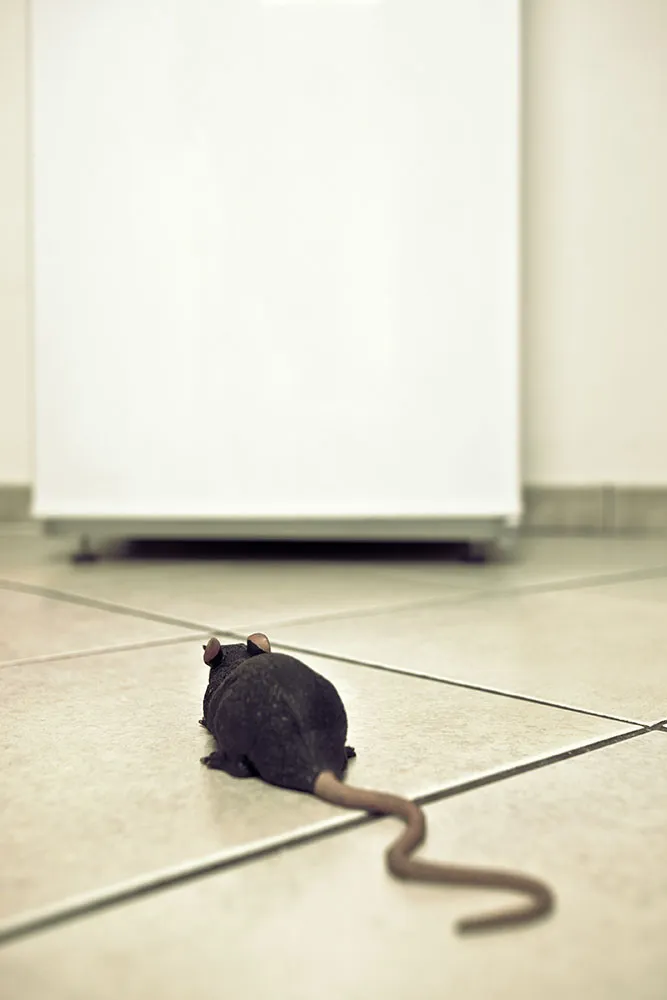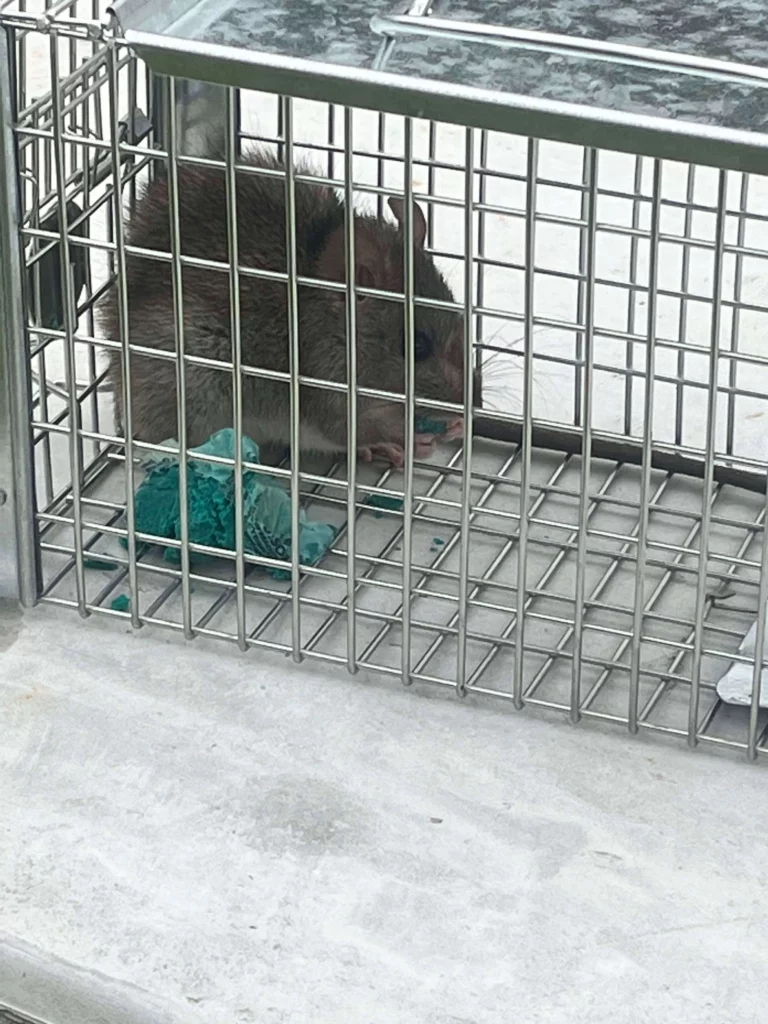






The Norway rat (Rattus norvegicus) is a member of the rodent family Muridae. It is also known as the brown rat, house rat, or sewer rat. These warm-blooded animals are distributed throughout the world, including Australia. In fact, it is one of the most common rodents in this country.
Norway rats are relatively large rodents, with adults weighing up to 500 grams. They have coarse brown fur, and their tails are shorter than their bodies.
Norway rats are omnivorous animals, and their diet includes rodents, birds, insects, and plant material. They are also known to eat pet food, animal feed, food scraps and garbage. Norway rats reproduce rapidly, and a single female can produce up to 50 offspring in a year. They typically live for 2-3 years in the wild, but Norway rats live for up to 5 years in captivity.
The Norway rat is a medium-sized rodent with a body length of up to 25 cm. It has a blunt snout and small ears. The coat is usually brown or greyish-brown, with a lighter underside. This species is omnivorous and will eat almost anything. It is an important pest of agriculture, as it can damage crops and stored foodstuffs.
In urban areas, Norway rats may transmit diseases such as typhus and leptospirosis to humans. They are also known to damage property by gnawing on woodwork and electrical cables. They are also major agricultural pests, causing extensive damage to crops.
Controlling rats involves baiting with rodenticides or trapping. Physical barriers such as proofing can also be used to prevent them from entering buildings.
The Norway rat (Rattus norvegicus) is a medium-sized rodent that is typically brown in colour. They weigh between 500 and 650 grams and are approximately 20 cm long from nose to tail. They have small eyes and ears, and a long, blunt nose. Their front feet have four toes, while their back feet have only three. Norway rats are excellent climbers and are often found in elevated areas such as attics and trees.
They are also good swimmers and have been known to enter houses through toilets and other plumbing fixtures. Norway rats are one of the most common types of rat in the world and can be found in nearly every country on Earth.
The Norway rat is a common pest in Australia. These rodents are also known as brown rats, house rats, or ship rats. They are typically reddish-brown in colour with a light grey underbelly.
Norway rats typically live for about 1-2 years in the wild. However, they can live up to 4 years if they are in captivity with access to food and water. Average Female Norway rat typically has litters of 6-12 young, although larger litters of up to 24 young are not unheard of.

The young are born blind and deaf and weigh only about 25 grams at birth. They will grow quickly though, reaching their full size in just 6-8 weeks. Once they reach adulthood, Norway rats will begin to reproduce themselves.
Therefore, the life cycle of these pests can be hard to break if they are not controlled early on by the best pest control companies.
The Norway rat (Rattus norvegicus) is a common pest in Australia. These rats are typically found in urban areas, and their numbers can increase rapidly if they have access to food and shelter.
Norway rats are omnivorous and will eat almost anything. They are also excellent climbers, and can easily enter homes and other buildings through gaps in walls or roofing. Once inside, they will often build nests in insulation or under floorboards.
Norway rats can cause significant property damage, and they can also spread disease. To control these pests, it is important to remove food sources and shelter from around the home.
Trapping and baiting can also be effective, but it is important to use products that are specifically designed for rats, as other products may be harmful to pets or children.
One of the most common signs of a Norway rat (Rattus norvegicus) infestation is the presence of droppings. These can be found in a variety of locations, including along walls, in storage areas, and near food sources.
Other indications of an infestation include gnawed holes in walls or floors, footprints, and rub marks.
Norway rats are also notoriously noisy, and their scampering and squeaking can often be heard at night.
If you suspect that you have a Norway rat infestation, it is important to contact a professional pest control company as soon as possible. These rodents can cause structural damage to your home and spread disease, so prompt action is essential.
The Norway rat is a common type of rodent that is found in many parts of the world. These rats are typically very large, and they have brown or black fur. Norway rats are omnivores, which means they will eat almost anything. Their diet consists of both plant and animal material. These rats are especially fond of human food, dog food, and they will often invade homes and businesses in search of scraps. In addition to human food, Norway rats will also eat other rodents, birds, reptiles, and even insects.
These animals are not picky eaters, and they will often consume whatever is available to them. As a result, Norway rats can be a nuisance to homeowners and businesses alike.
The Norway rat (Rattus norvegicus) is a nocturnal creature, meaning that it is most active at night. There are several reasons for this behaviour.
For one, rats are known to be timid animals, and they tend to avoid contact with humans whenever possible.
Additionally, rats are better equipped to find food and avoid predators in the dark. Their large eyes allow them to see clearly in low light, and their rows of sharp teeth make it easy for them to gnaw through obstacles.
Finally, rats are highly social creatures, and they prefer to travel in groups. This helps them to stay safe from predators and increases their chances of finding food.
Together, these factors explain why the Norway rat is most active at night.













A Norway rat (Rattus norvegicus) dead carcass can cause several problems. First, the carcass can attract other rats, which can lead to an infestation. Second, dead rats can attract other pests, such as flies and mice. Third, the carcass can decompose, which can release harmful bacteria into the environment. Finally, the carcass can be difficult to remove, and it may release a foul odour. If you find a dead rat on your property, it is important to call a professional pest control company to have the carcass removed. By taking prompt action, you can help prevent any further problems that may be caused by the presence of a dead rat.
Seal all cracks and holes on the exterior of your home, including entry points for utilities and vents.
Install door sweeps and weather stripping to seal gaps around doors and windows.
Keep food in airtight containers and dispose of garbage regularly.
Remove any clutter or debris from your yard that could provide shelter for rodents.
Trim trees and shrubs so they’re not touching your home.
Make sure garbage bags and trash are in sealed bags with lids closed overnight
Install screens over vents and chimneys to keep rats from entering your home.
Proactive pest control to place bait stations around your premise and bait in the roof void to achieve control before an infestation occurs
E1 Pest Solutions has a 5-star reputation with a long history of success in exterminating Norway rat (Rattus norvegicus) infestations. We have a team of highly trained and experienced professionals who are experts in identifying and eliminating these pests. We use the latest technology and equipment to effectively eliminate infestations, and we offer a money-back guarantee if the infestation is not eliminated. In addition, we offer discounts for customers who refer us to others who may be experiencing similar problems. As a result, E1 Pest Solutions is the best choice for those who want to rid their home or business of Norway rat infestations.

ABN 28640611892
License No. 5097543
